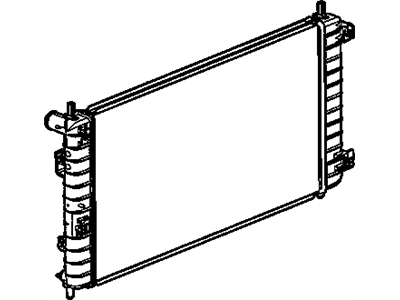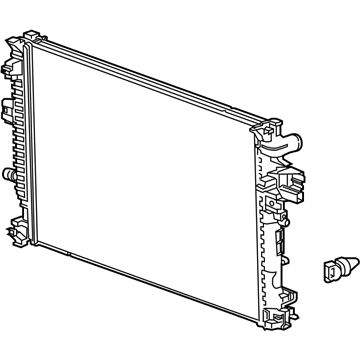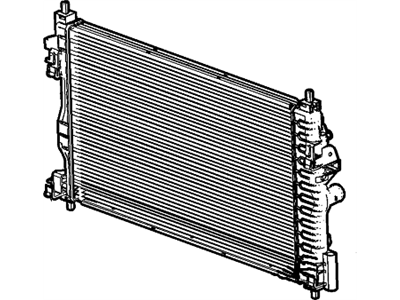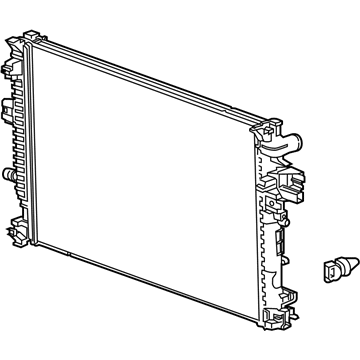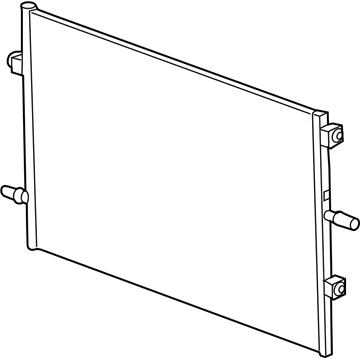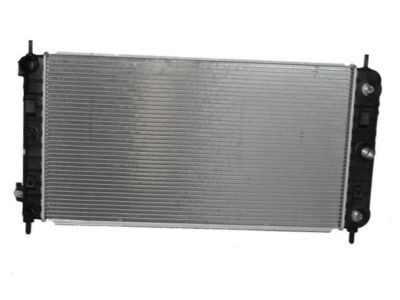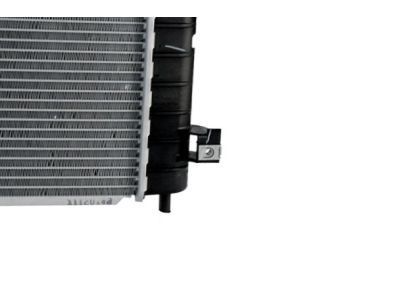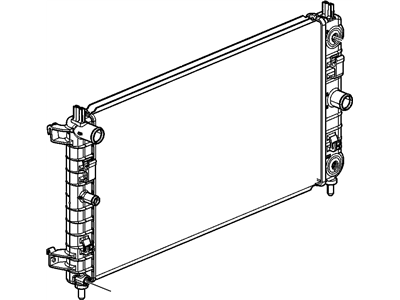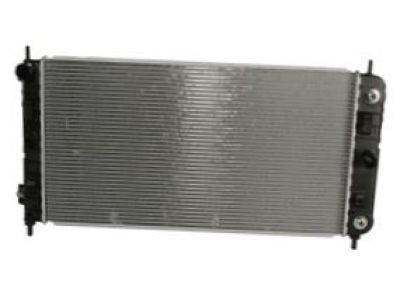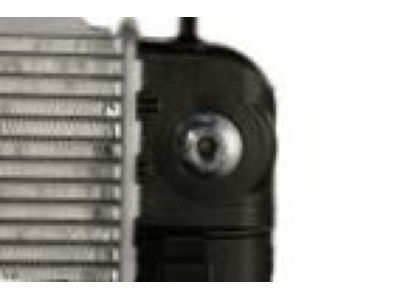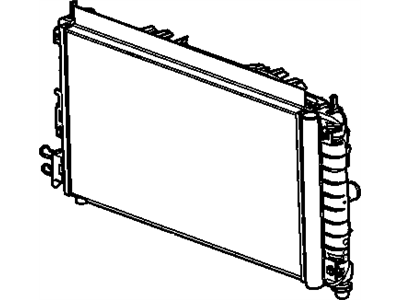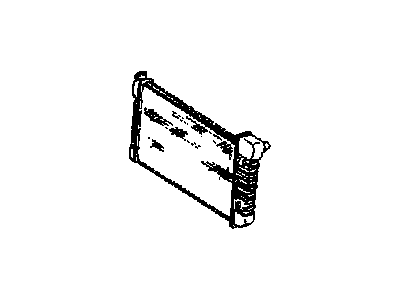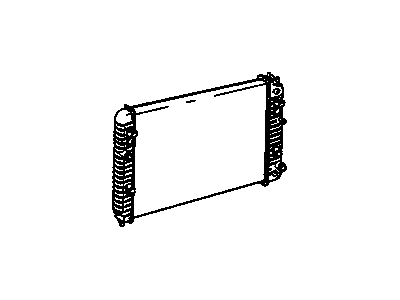
My Garage
My Account
Cart
Genuine Chevrolet Malibu Radiator
Cooling Radiator- Select Vehicle by Model
- Select Vehicle by VIN
Select Vehicle by Model
orMake
Model
Year
Select Vehicle by VIN
For the most accurate results, select vehicle by your VIN (Vehicle Identification Number).
17 Radiators found
Chevrolet Malibu RADIATOR ASM,ENG
Part Number: 42808689$193.73 MSRP: $274.54You Save: $80.81 (30%)Ships in 1-2 Business DaysChevrolet Malibu Auxiliary Radiator Assembly
Part Number: 20850707$128.77 MSRP: $202.47You Save: $73.70 (37%)Ships in 1-3 Business DaysChevrolet Malibu Radiator Assembly
Part Number: 23453634$274.67 MSRP: $412.42You Save: $137.75 (34%)Ships in 1-2 Business DaysChevrolet Malibu Engine Radiator Assembly
Part Number: 84493651$213.09 MSRP: $319.95You Save: $106.86 (34%)Ships in 1-2 Business DaysChevrolet Malibu Radiator Assembly
Part Number: 22883363$170.90 MSRP: $258.94You Save: $88.04 (34%)Ships in 1-3 Business DaysChevrolet Malibu Radiator Assembly
Part Number: 20979496$198.07 MSRP: $311.43You Save: $113.36 (37%)Ships in 1-2 Business DaysChevrolet Malibu Radiator Assembly, Eng
Part Number: 84493629$131.67 MSRP: $197.69You Save: $66.02 (34%)Ships in 1-3 Business DaysChevrolet Malibu RADIATOR ASM-ENG
Part Number: 42808688$182.28 MSRP: $284.08You Save: $101.80 (36%)Ships in 1-2 Business DaysChevrolet Malibu Auxiliary Radiator Assembly
Part Number: 84153763$319.81 MSRP: $480.21You Save: $160.40 (34%)Chevrolet Malibu Radiator Assembly Poa (Part To Change To Nickel Plated Or Bright)
Part Number: 52494386
Chevrolet Malibu Radiator
Chevrolet Malibu Radiator is identified as a key component in the engine cooling system with the main task of extracting heat from the coolant and expelling it into the atmosphere via heat exchange means. Aluminum cores with either plastic or aluminum tanks are standard to most Malibu Radiators, though copper/brass Radiators have also been implemented. The location of the radiator depends on the car maker's preferences, though, generally, the radiator is placed at the front to benefit from the airflow. Some of the problems that are likely to affect a radiator include leaks with possible remedies depending on the extent of the damage but the premier long-term solution is replacement. Performance radiators can be better than those placed in the car factories since they use aluminum construction and stylized design for efficient cooling. Such radiators often have bigger tubes and increased number of fins for the flow and heat exchange of the coolant to lower the temperate of the engine. Being direct fit performance radiators they can easily be fitted and come with an option of larger cores for even better cooling. In summary, the Chevrolet Malibu Radiator is one of the essential parts of the vehicle that helps regulate the engine for high-performance ride and safe driving.
Each OEM Chevrolet Malibu Radiator we offer is competitively priced and comes with the assurance of the manufacturer's warranty for the part. Furthermore, we guarantee the speedy delivery of your orders right to your doorstep. Our hassle-free return policy is also in place for your peace of mind.
Chevrolet Malibu Radiator Parts Questions & Experts Answers
- Q: What is the removal process for the radiator on Chevrolet Malibu?A:However, the removal process for engines of 2.0L from 2015 and earlier involves discharging the air conditioning system, disconnecting the negative battery cable, raising and supporting the vehicle on jackstands, draining the cooling system, removing one of these things: air filter housing, intake duct or resonator, and engine cooling fan assembly. Then the radiator upper bracket mounting bolts and brackets are removed as well as radiator hoses are disconnected.The condenser and charge air cooler are also taken out followed by the automatic transaxle fluid cooler lines from the radiator. The radiator air seal is removed followed by tilting forward of the radiator and lifting it up from inside the vehicle. However, care should be taken to ensure proper seating of its tabs with that of the condenser as well as secure fastening during installation. Refill the coolant while checking for leaks in your engine so that it may reach normal operating temperature levels. The technician should evacuate, recharge and leak-test ACs while examining for any leakage in transaxle fluids. As for 2.5L engines, remove procedure starts with removing air filler housing then intake duct resonance followed by disconnection of electrical connectors to engine cooling fan assembly while loosening radiator hoses and automatic transaxle fluid cooler lines are also detached. Next take out these two components: condenser that has been lifted off retainers on radiaotor; front bumper cover . Finally lower the below mentioned parts' mounting bolts including left side mount insulator; right side insulator; front mount insulator or rear mount insulator before lowering down both radiaor & fan shroud from underneath your car. On reinstallation ensure that you have made proper connections between condenser tabs and those of radiators so that they can be securely fastened again within their positions. Fill up cooling fluids so that an engine may be checked for leaking before allowing it to achieve normal working temperatures . However, the fluid levels of transaxle must be checked. However in case of 1.5L engines and 2016 or newer models of those with 2.0L engine, one has to recharge the air conditioner, disconnect the negative battery cable, jack up the vehicle on jack stands, drain the radiator, remove front bumper cover, condenser, radiator upper bracket fasteners, air filter inlet and outlet ducts as well as charge air cooler. At that time automatic transaxle fluid coolers lines are segregated from radiators and radiator hoses are detached. Next step is electric fans got disconnected in addition to lifting out engine cooling fan module or assembly along with a radiator. Install cooling fan shroud onto radiaor before following reverse removal process for reinstalling these elements. So now I have to refill coolant checking for any leaks left in my car so that my car can heat up uniformly to a normal operation temperature level. Just check transmission fluid quantities while evacuating acs besides refilling them again by an expert able to test any leakage detected from compressors through pressure testing.
Related Chevrolet Malibu Parts
Browse by Year
2024 Radiator 2023 Radiator 2022 Radiator 2021 Radiator 2020 Radiator 2019 Radiator 2018 Radiator 2017 Radiator 2016 Radiator 2015 Radiator 2014 Radiator 2013 Radiator 2012 Radiator 2011 Radiator 2010 Radiator 2009 Radiator 2008 Radiator 2007 Radiator 2006 Radiator 2005 Radiator 2004 Radiator 2003 Radiator 2002 Radiator 2001 Radiator 2000 Radiator 1999 Radiator 1998 Radiator 1997 Radiator 1983 Radiator 1982 Radiator
